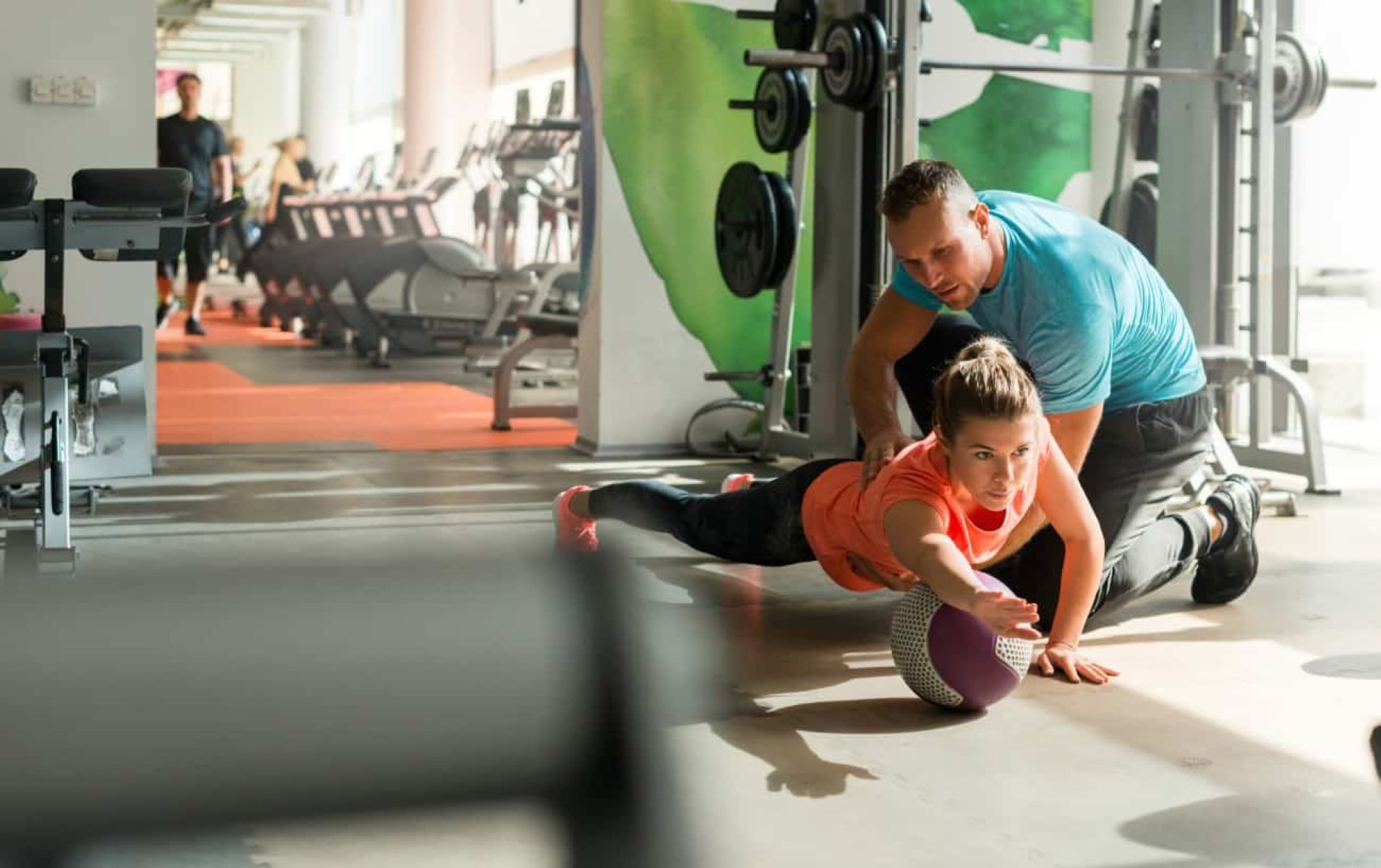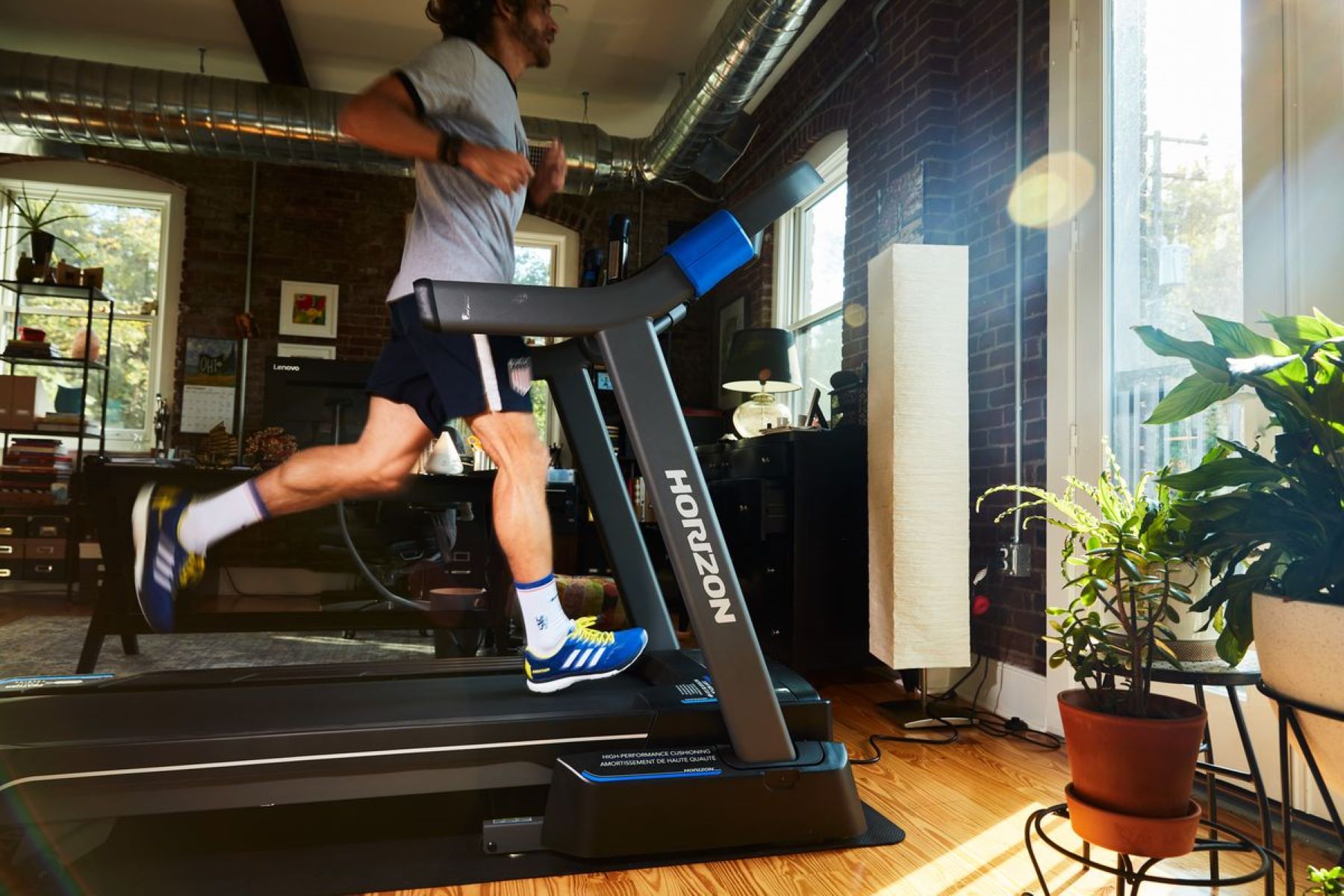

Featured
How To Train Power Endurance
Modified: January 2, 2024
Learn how to train power endurance with our featured guide. Build strength and stamina for long-lasting, high-intensity workouts and achieve your fitness goals.
Introduction
Welcome to the world of power endurance training! Whether you’re an athlete, a fitness enthusiast, or someone looking to improve their overall endurance, power endurance training can be a game-changer in reaching your goals. This form of training focuses on developing the ability to sustain high-intensity efforts over an extended period of time. In this article, we will delve into the concept of power endurance, why it is important, how to assess it, and provide practical tips for incorporating it into your training regimen.
Power endurance can be defined as the ability to maintain a high level of power output over an extended duration. It combines elements of both strength and endurance, making it a crucial component for activities that require repeated explosive movements or sustained efforts, such as sprinting, cycling, swimming, or multi-step fitness challenges.
So why is power endurance important? The benefits of developing power endurance are numerous. Firstly, it enhances performance in sports and activities that involve bursts of intense effort followed by shorter recovery periods. By improving your ability to sustain high-power output, you can maintain a faster pace, push harder, and outlast your competitors. Additionally, power endurance training can increase overall stamina, allowing you to perform better in longer duration activities and workouts.
Assessing your power endurance is essential to tailor your training program to your current fitness level. One common assessment method is to perform a specific exercise or activity at maximum effort for a predetermined period of time or distance. You can then measure your performance and use it as a baseline for tracking progress. Another approach is to assess your ability to repeat high-intensity efforts with minimal rest between sets. This can be done by performing a circuit-based workout and measuring your average power output or completing as many repetitions as possible within a specific time frame.
When it comes to training principles for power endurance, there are a few key factors to consider. First and foremost, specificity is crucial. Your training should mimic the demands of the activities you wish to improve in. This means incorporating exercises and workouts that involve explosive movements and sustained efforts. Additionally, progressive overload is essential to see improvements over time. Gradually increase the intensity, duration, or resistance in your workouts to continually challenge your body and stimulate adaptation.
What is Power Endurance?
Power endurance is a term used to describe the ability to sustain high-intensity efforts over an extended period of time. It combines elements of both power and endurance, making it essential for activities that require repeated explosive movements or sustained efforts. Unlike traditional endurance training, which focuses on building the ability to maintain a steady pace over a long duration, power endurance training emphasizes maintaining a high level of power output.
When we talk about power, we are referring to the force generated in a given period of time. It is the ability to exert maximal effort and generate a high level of force quickly. On the other hand, endurance is the ability to perform prolonged, repetitive activities without fatigue. Power endurance is the sweet spot where these two components intersect. It’s about being able to sustain bursts of high-intensity effort for an extended period, without compromising on power output.
Power endurance is particularly important in sports and activities that require explosive movements and prolonged efforts. It’s crucial for sprinters, who need to maintain speed and power throughout a race. It’s also vital for cyclists, who must repeatedly pedal with force to conquer tough terrains or sprint to the finish line. Swimmers, martial artists, and even everyday fitness enthusiasts can benefit from power endurance training to improve their performance and achieve their goals.
One example of power endurance training is circuit training. Circuit training involves a series of exercises performed back-to-back, with minimal rest between sets. Each exercise focuses on developing power and activates multiple muscle groups. By moving from one exercise to another without fully recovering, you challenge your muscles to sustain high-intensity efforts over an extended period.
Power endurance is different from muscular endurance, which primarily focuses on the ability to perform repetitive movements without experiencing muscle fatigue. While muscular endurance is essential, power endurance adds an extra layer of intensity and explosiveness. It requires the muscles to fire quickly and generate force at a high level, even when fatigue sets in.
Power endurance can benefit people from various fitness backgrounds. Whether you’re an athlete looking to improve your performance in a specific sport, a fitness enthusiast wanting to push your limits, or someone who simply wants to spice up your workouts and overcome plateaus, incorporating power endurance training can be a game-changer. By improving your ability to sustain high-intensity efforts, you can enhance your overall performance, endurance, and power output.
Why is Power Endurance Important for Training?
Power endurance is a vital component of training for athletes and fitness enthusiasts alike. It plays a crucial role in enhancing performance and achieving fitness goals. Here are some reasons why power endurance is important:
1. Enhanced Performance: Power endurance training helps improve performance in sports and activities that require bursts of intense effort followed by shorter recovery periods. By developing the ability to sustain high-power output over an extended duration, athletes can maintain a faster pace, push harder, and outlast their competitors. Whether it’s sprinting, cycling, swimming, or participating in multi-step fitness challenges, power endurance training can give you the edge you need to excel.
2. Increased Stamina: Power endurance training also boosts overall stamina and endurance. It improves your body’s ability to perform at high intensities for longer periods of time. This is particularly beneficial for activities that require sustained efforts without significant breaks, such as long-distance running, obstacle course races, or high-intensity interval training (HIIT) workouts. By enhancing your stamina, you can go the distance and conquer challenging physical tasks with ease.
3. Fat Loss and Muscle Development: Power endurance training can be an effective tool for fat loss and muscle development. The high-intensity nature of this training style helps increase the metabolic demand on the body, leading to greater calorie expenditure and increased fat burning. Additionally, power endurance exercises often engage multiple muscle groups, promoting muscle development, strength, and overall body composition improvement.
4. Functional Fitness: Power endurance training enhances functional fitness by improving the body’s ability to perform real-life, everyday tasks with power and endurance. From lifting heavy objects to climbing stairs, power endurance training equips you with the strength and stamina needed to handle various physical demands in daily life. It enhances your overall athleticism and contributes to better quality of life.
5. Mental Toughness: Power endurance training challenges not only the body but also the mind. It pushes you out of your comfort zone, requiring mental toughness and resilience to sustain high-intensity efforts when fatigue sets in. The mental fortitude developed through power endurance training transcends into other areas of life, helping you overcome obstacles and persevere in the face of challenges.
Overall, power endurance is an important aspect of training that can lead to improved performance, increased stamina, fat loss, muscle development, functional fitness, and mental toughness. By incorporating power endurance exercises and workouts into your training regimen, you can take your fitness journey to new heights and achieve your goals with greater efficiency and effectiveness.
Assessment of Power Endurance
Assessing your power endurance is crucial to understanding your current fitness level and tracking progress in your training. It allows you to design a targeted and effective training program that aligns with your goals. Here are some common methods for assessing power endurance:
1. Maximum Effort Test: One way to assess power endurance is by performing a specific exercise or activity at maximum effort for a predetermined period of time or distance. For example, you can sprint as fast as possible for 400 meters or perform as many kettlebell swings as you can in 3 minutes. The goal is to maintain a high level of power output for the entire duration and measure your performance. By repeating this assessment periodically, you can track improvements in your power endurance.
2. Repetition Test: Another approach is to assess your ability to repeat high-intensity efforts with minimal rest between sets. This can be done by performing a circuit-based workout that includes exercises targeting different muscle groups or movement patterns. For instance, you might perform a circuit consisting of kettlebell swings, box jumps, and burpees, completing a set number of repetitions for each exercise before moving onto the next one. The goal is to measure your average power output or the number of repetitions you can complete within a specific time frame.
3. Heart Rate Monitoring: Monitoring your heart rate during power endurance workouts can provide valuable insights into your cardiovascular fitness and exertion level. By wearing a heart rate monitor, you can track your heart rate zones and ensure you are working at an intensity that challenges your power endurance. For example, you might aim to sustain your heart rate within the 80-90% of maximum range during a power endurance workout. This data can help you adjust your training intensity and optimize your performance.
When assessing power endurance, it’s essential to consider the specific demands of your sport or activity. Choose assessment methods that mimic the movements and intensity levels required in your chosen discipline. It’s also important to establish a baseline and measure your progress over time by retesting at regular intervals.
Additionally, it can be helpful to keep a training journal to record your assessment results, workout details, and subjective feelings during each workout. This journal can serve as a valuable reference and motivational tool, allowing you to track your progress and make informed adjustments to your training program.
Remember that power endurance is a combination of strength and endurance. It’s not just about the ability to generate power, but also the capacity to sustain it over time. By regularly assessing your power endurance and incorporating targeted exercises and workouts into your training routine, you can optimize your performance and achieve your fitness goals more effectively.
Training Principles for Power Endurance
When it comes to developing power endurance, there are several training principles to keep in mind to maximize your results. These principles will help you design an effective and efficient training program. Here are some key principles to consider:
1. Specificity: Tailor your training to mimic the demands of your chosen sport or activity. Focus on exercises and movements that involve explosive power and sustained efforts. This ensures that your training closely matches the requirements of your goal, allowing for optimal transfer of skills and abilities.
2. Progressive Overload: Gradually increase the intensity, duration, or resistance in your workouts to continually challenge your body and stimulate adaptation. As your power endurance improves, you need to progressively overload your muscles and cardiovascular system to keep making gains. This can be achieved by adding more repetitions, increasing the weight, shortening rest periods, or incorporating more challenging exercises.
3. Varied Intensity and Duration: Power endurance training should involve a range of intensities and durations to target different energy systems and challenge your body in various ways. Incorporate high-intensity intervals, moderate-intensity sustained efforts, and longer duration workouts to develop both power and endurance components of your fitness.
4. Recovery and Rest: Adequate recovery is essential to allow your body to adapt and grow stronger. Include rest days in your training program to give your muscles and nervous system time to recover and rebuild. Proper nutrition, hydration, and sleep are also critical for optimal recovery and performance.
5. Periodization: Implement a periodization plan in your training program to optimize your progress. Periodization involves dividing your training into specific phases, each with its own focus and goals. This allows for proper progression, varied training stimuli, and periodic recovery phases. Common periodization models include linear periodization, undulating periodization, and block periodization.
6. Technique and Form: Paying attention to proper technique and form is crucial for optimizing power and minimizing the risk of injury. Focus on quality movement patterns and ensure that you are performing exercises with proper alignment and execution. This will ensure that you are activating the correct muscle groups and maximizing your power output.
7. Regular Assessments and Adjustments: Continually assess your power endurance and track your progress over time. Regularly reassess your abilities using the assessment methods mentioned earlier in this article. Based on your results, make necessary adjustments to your training program to continue challenging yourself and adapting to higher levels of power endurance.
By incorporating these training principles into your power endurance program, you will create a structured and effective training approach. Remember to listen to your body, modify workouts as needed for your fitness level, and seek guidance from a qualified fitness professional if necessary. With consistent training and adherence to these principles, you will see significant improvements in your power endurance and overall athletic performance.
Exercises and Workouts for Power Endurance
When training for power endurance, incorporating specific exercises and workouts is essential to maximize your progress. Here are some exercises and workout ideas that target power endurance:
1. Plyometric Exercises: Plyometric exercises are explosive movements that combine jumping, hopping, and bounding. These exercises, such as box jumps, depth jumps, and squat jumps, help develop power in the lower body and improve the ability to generate force quickly. Perform plyometric exercises with proper form, focusing on full extension and landing softly to minimize impact on joints.
2. High-Intensity Interval Training (HIIT): HIIT workouts are a great way to improve power endurance. Alternate between periods of high-intensity exercises, such as sprints, burpees, or kettlebell swings, and short active recovery periods. This challenges your cardiovascular system and helps build both power and endurance. Aim for a 2:1 work-to-rest ratio, gradually increasing the duration of the work intervals and reducing rest time as your power endurance improves.
3. Circuit Training: Circuit training involves performing a series of exercises back-to-back, targeting different muscle groups. Select exercises that require explosive power, such as medicine ball slams, kettlebell snatches, or explosive push-ups. Perform each exercise for a set number of repetitions or a specific time and move on to the next exercise with minimal rest. Complete multiple rounds of the circuit to challenge your power endurance and improve overall fitness.
4. Interval Swim Training: If you’re a swimmer, incorporating interval training into your workouts can be highly effective for power endurance. Alternate between short bursts of high-intensity swimming and active recovery periods. For example, perform a set of 50-meter sprints followed by an easy swim or rest interval. As you progress, increase the number of repetitions or reduce the rest periods to continuously challenge your power endurance in the pool.
5. CrossFit-style Training: CrossFit workouts often involve a combination of strength and conditioning exercises that target power endurance. These workouts may include exercises like kettlebell swings, box jumps, wall balls, and rowing intervals. Participating in CrossFit classes or following CrossFit-style workouts can provide a well-rounded approach to developing power endurance and overall fitness.
6. Sport-Specific Drills: Incorporate drills that mimic the movements and demands of your specific sport. For example, if you’re a cyclist, include hill sprints or intervals to build power endurance on the bike. If you’re a basketball player, incorporate agility ladder drills and explosive jump exercises to improve power endurance for quick bursts of movement on the court. Tailor your exercises to directly translate to the activities you want to improve in.
Remember to start with exercises and workouts that match your current fitness level and gradually progress as your power endurance improves. It’s important to maintain proper form and technique to avoid injuries. Listen to your body and modify exercises or seek guidance from a qualified fitness professional if needed.
By incorporating these exercises and workout ideas into your training routine, you will target and develop your power endurance, improving your ability to sustain high-intensity efforts and perform at your best in your chosen sport or activity.
Nutrition and Recovery for Power Endurance Training
Proper nutrition and effective recovery strategies are essential components of any training program, including power endurance training. Here are some key considerations for nutrition and recovery to optimize your performance and support your power endurance training:
1. Macronutrient Balance: Fueling your body with the right balance of macronutrients is important for power endurance training. Carbohydrates provide the primary source of energy for high-intensity efforts, so include complex carbs like whole grains, fruits, and vegetables in your diet. Protein is crucial for muscle recovery and growth, so include lean sources like chicken, fish, tofu, and legumes. Healthy fats from sources like avocados, nuts, and olive oil help support joint health and hormone production.
2. Timing of Meals: Timing your meals properly can help optimize energy levels and support recovery. Aim to consume a balanced meal or snack containing carbohydrates and protein within 2-3 hours before your training session to provide sufficient fuel. After workouts, have a post-workout meal or snack including protein and carbohydrates within 30-60 minutes to promote muscle repair and glycogen replenishment.
3. Hydration: Staying hydrated is crucial for optimal performance and recovery. Adequate fluid intake helps regulate body temperature, promote nutrient delivery, and support joint function. Drink water throughout the day, and hydrate before, during, and after workouts. Consider electrolyte drinks if you are engaged in prolonged or intense training sessions that cause excessive sweating.
4. Recovery Nutrition: Consuming the right nutrients after workouts is essential for recovery. Include protein-rich foods to support muscle repair, such as lean meats, Greek yogurt, or protein shakes. Carbohydrates help replenish glycogen stores, so include sources like fruits, whole grains, or sweet potatoes. Don’t forget to add some healthy fats and antioxidant-rich foods like nuts, seeds, and colorful vegetables to aid in reducing inflammation and promoting overall recovery.
5. Adequate Rest and Sleep: Rest and sleep are critical for effective recovery and optimal performance. Give your body enough time to rest and rebuild between training sessions. Aim for 7-9 hours of quality sleep each night to support muscle repair, hormone production, and overall recovery. Developing a consistent sleep schedule and creating a relaxing bedtime routine can help improve sleep quality.
6. Active Recovery: Incorporate active recovery strategies such as light aerobic exercise, stretching, or foam rolling to promote circulation, reduce muscle soreness, and aid in recovery. These activities help flush out metabolic waste products, increase nutrient delivery to muscles, and improve overall mobility.
7. Listen to Your Body: Pay attention to your body’s signals and adjust your nutrition and recovery strategies accordingly. Everyone’s nutritional needs and recovery abilities are unique, so listen to your hunger cues, assess your nutrient requirements, and modify your approach as needed. If you’re experiencing persistent fatigue, soreness, or decreased performance, consider consulting with a sports nutritionist or healthcare professional.
Remember that nutrition and recovery go hand in hand with training. By fueling your body with the right nutrients and allowing sufficient time for recovery, you support your power endurance training, optimize performance, and reduce the risk of injury. Take a holistic approach to your training by prioritizing nutrition and recovery alongside your workouts.
Common Mistakes and How to Avoid Them
When it comes to power endurance training, there are some common mistakes that can hinder progress and increase the risk of injury. By being aware of these mistakes, you can make the necessary adjustments to your training approach. Here are some common mistakes to avoid:
1. Neglecting Proper Warm-up: Skipping or rushing through a warm-up is a common mistake that can lead to injury and decreased performance. Take the time to properly warm up your muscles and joints before each training session. Include dynamic stretches, mobility exercises, and specific warm-up sets to prepare your body for the demands of the workout.
2. Lack of Progression: Many individuals try to push too hard too quickly, neglecting the principle of progressive overload. While it’s essential to challenge yourself, progressing too rapidly can lead to overtraining, burnout, and, ultimately, a plateau in performance. Gradually increase the intensity, duration, or resistance of your workouts to allow your body to adapt and make steady progress.
3. Poor Technique and Form: Sacrificing proper technique and form in pursuit of higher intensity or greater speed is a common mistake that can lead to injuries. Focusing on quality movement patterns ensures that the targeted muscles are effectively activated and reduces the risk of joint strain. Take the time to learn and perform exercises correctly, seeking guidance from a qualified trainer if needed.
4. Insufficient Rest and Recovery: Rest and recovery are essential components of any training program. Overtraining and insufficient rest can lead to decreased performance, increased risk of injury, and burnout. Make sure to schedule rest days in your training program and prioritize sleep to allow for proper recovery and muscle repair.
5. Inadequate Nutrition: Neglecting proper nutrition can limit your progress and hinder recovery. Ensure you are providing your body with the necessary nutrients to support your training. Consume a well-balanced diet that includes a variety of whole foods, including lean proteins, complex carbohydrates, healthy fats, and plenty of fruits and vegetables.
6. Neglecting Flexibility and Mobility: Power endurance training often involves dynamic and explosive movements, which can lead to tight muscles and decreased flexibility if not addressed. Incorporate stretching, mobility exercises, and foam rolling into your training routine to enhance flexibility, improve joint range of motion, and reduce the risk of injury.
7. Lack of Planning and Structure: Approaching power endurance training without a plan or structure can limit your progress. Develop a well-structured training program that focuses on specific goals and incorporates the principles of specificity and progressive overload. This will provide direction and help you track your progress effectively.
8. Overemphasizing Quantity over Quality: It’s important to strike a balance between volume and intensity in your training. While it’s tempting to focus solely on increasing the amount of training, it’s equally important to prioritize quality. Ensure that your workouts are performed with focus and intention, maintaining proper form and technique throughout.
By being aware of these common mistakes and actively taking steps to avoid them, you can optimize your power endurance training and achieve better results. Remember to listen to your body, seek professional guidance when needed, and make adjustments as necessary to ensure a safe and effective training experience.
Conclusion
Power endurance training is a dynamic and effective approach to improving performance and reaching your fitness goals. By developing the ability to sustain high-power output over an extended period, you can excel in sports and activities that require explosive movements and prolonged efforts.
In this article, we explored the concept of power endurance, its importance in training, and the principles that underpin effective training. We discussed various assessment methods to gauge power endurance and provided exercise and workout ideas to target this specific fitness component.
We also highlighted the significance of proper nutrition and recovery strategies in supporting your power endurance training. Fueling your body with the right macronutrients, staying hydrated, and prioritizing rest and recovery all contribute to optimal performance and progress.
In addition, we identified common mistakes that individuals make during power endurance training and offered guidance on how to avoid them. Being aware of these pitfalls and making necessary adjustments in your approach will help you achieve better results and minimize the risk of injury.
Remember, power endurance training is a journey that requires dedication, consistency, and patience. Celebrate your progress along the way, and be mindful of your body’s signals to ensure a safe and effective training experience.
So, whether you’re an athlete seeking to enhance your performance, a fitness enthusiast wanting to challenge your limits, or someone simply looking to improve your overall endurance, incorporating power endurance training into your routine can help you unlock your full potential and achieve your fitness goals. Start implementing the principles and strategies outlined in this article, and get ready to redefine what you thought was possible in terms of power, endurance, and overall athletic performance.








